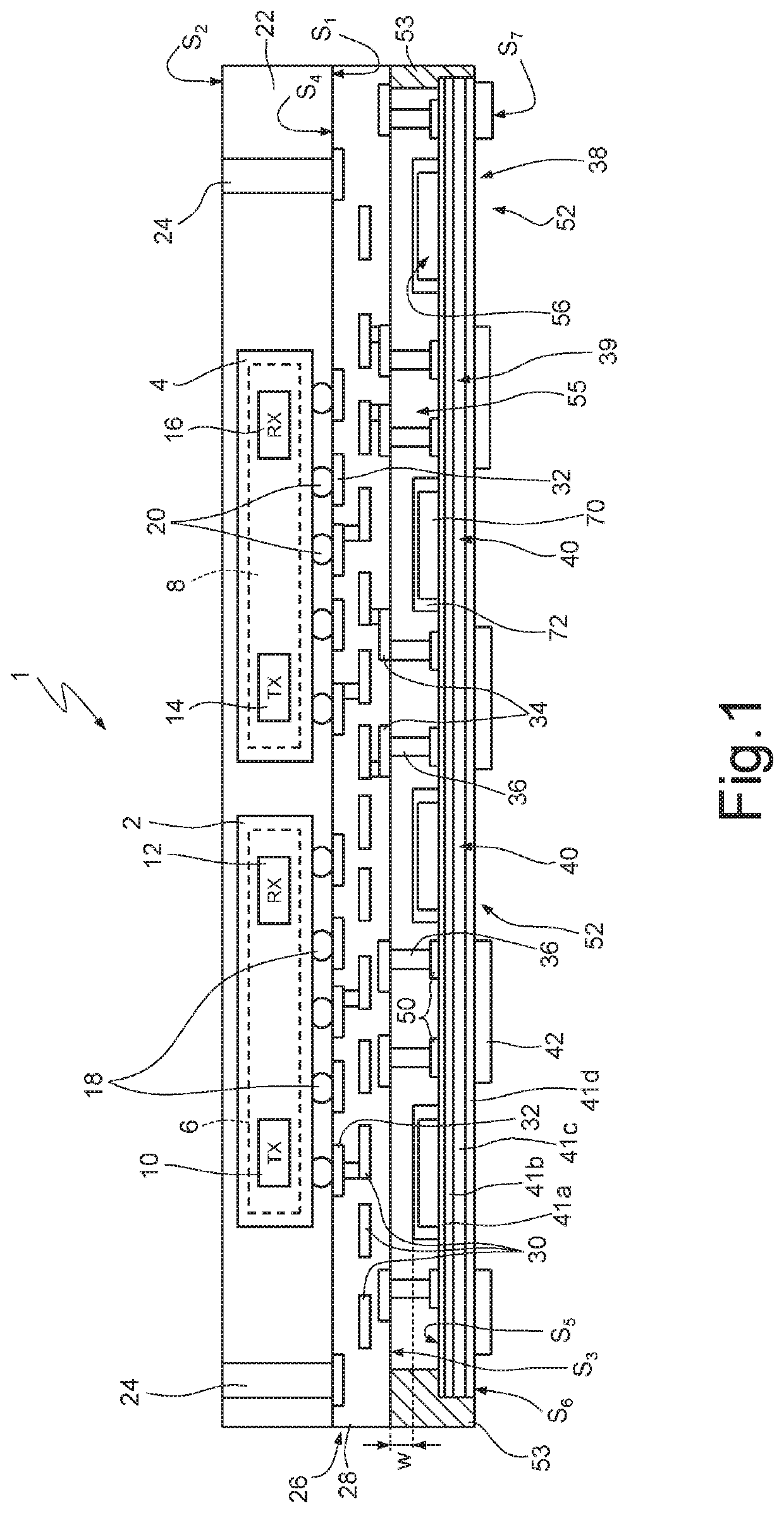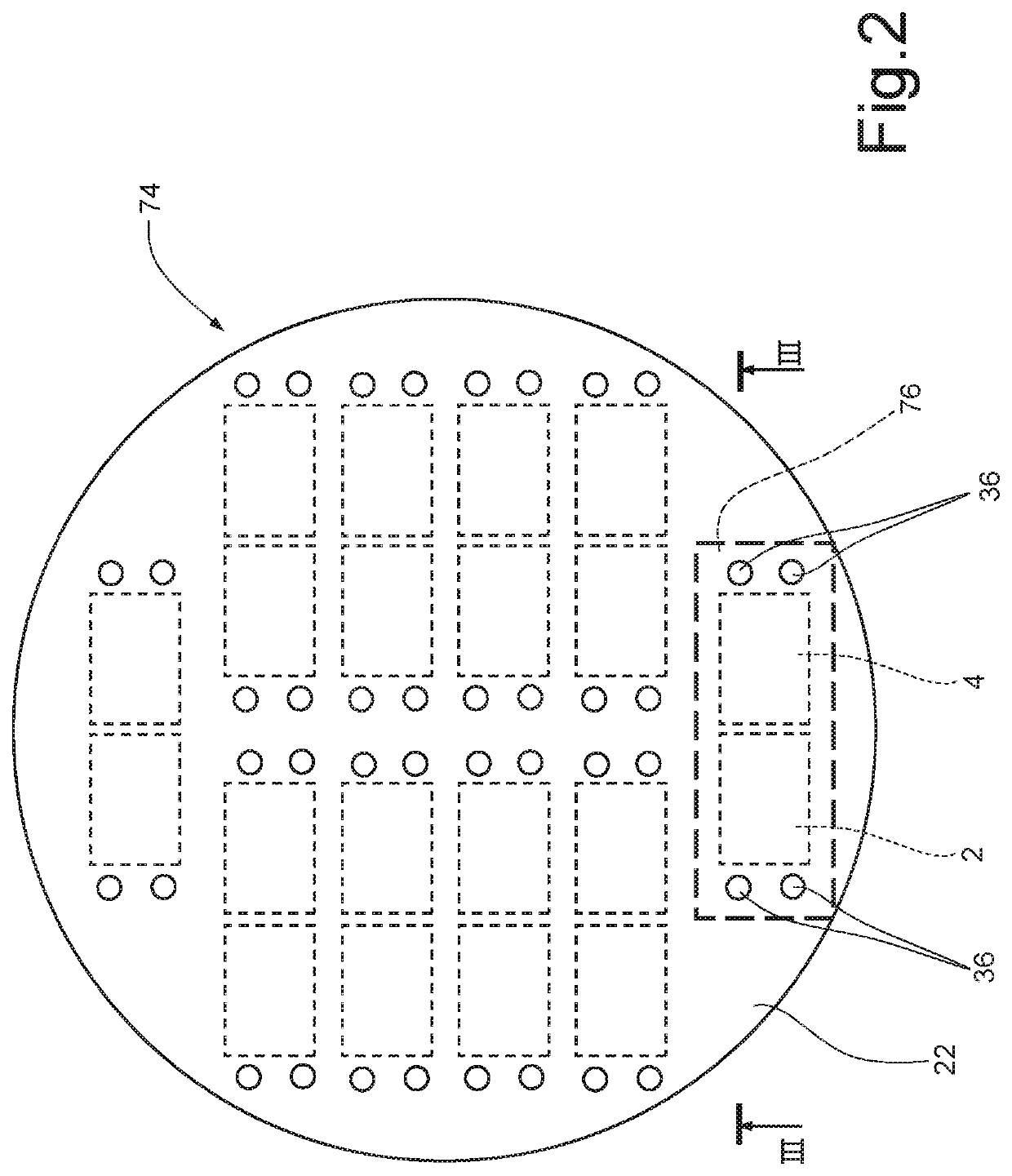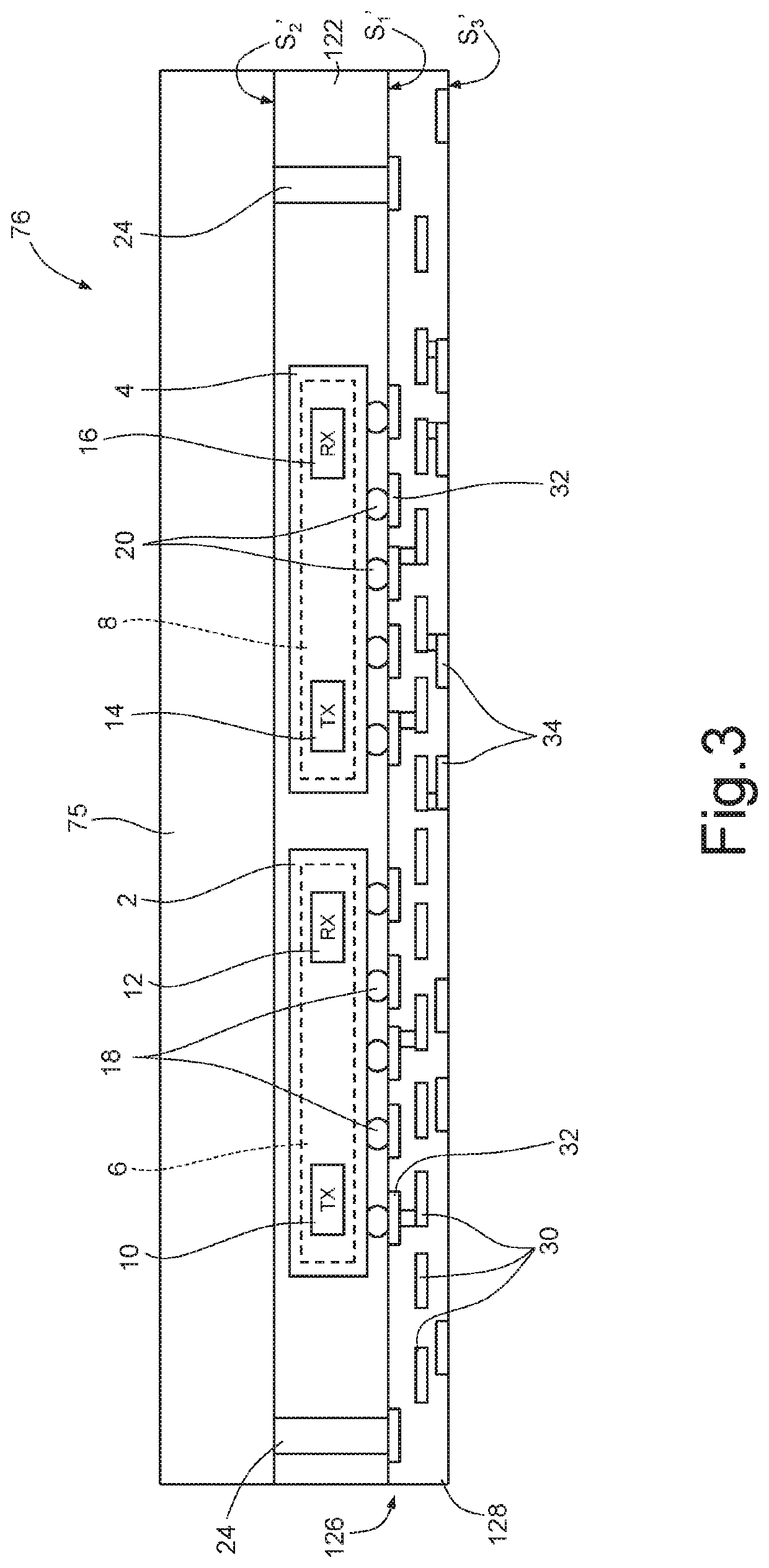Process for manufacturing microelectromechanical devices, in particular electroacoustic modules
a technology of electroacoustic modules and manufacturing processes, which is applied in the field of electroacoustic modules, can solve the problems of low flexibility of the process and the inability of the manufacturing process to test the asics,
- Summary
- Abstract
- Description
- Claims
- Application Information
AI Technical Summary
Benefits of technology
Problems solved by technology
Method used
Image
Examples
Embodiment Construction
[0018]FIG. 1 shows an electroacoustic module 1, which comprises a first die 2 and a second die 4, formed inside which are, respectively, a first integrated circuit 6 and a second integrated circuit 8, formed, for example, by ASICs of a known type. Each of the first and second integrated circuits 6, 8 comprises a respective transmission circuit and a respective reception circuit, which are designated, respectively, by 10 and 12, in the case of the first integrated circuit 6, and by 14 and 16, in the case of the second integrated circuit 8.
[0019]Albeit not shown in detail, in each of the first and second integrated circuits 6, 8, the corresponding transmission and reception circuits are electrically connected to a corresponding plurality of metal bumps, designated, respectively, by 18 and 20 and also known as “microbumps”. Once again in a way in itself known, the bumps 18, 20 are electrically connected to the so-called last-level metallizations of the corresponding dice.
[0020]The elec...
PUM
| Property | Measurement | Unit |
|---|---|---|
| frequencies | aaaaa | aaaaa |
| thickness | aaaaa | aaaaa |
| thickness | aaaaa | aaaaa |
Abstract
Description
Claims
Application Information
 Login to View More
Login to View More - R&D
- Intellectual Property
- Life Sciences
- Materials
- Tech Scout
- Unparalleled Data Quality
- Higher Quality Content
- 60% Fewer Hallucinations
Browse by: Latest US Patents, China's latest patents, Technical Efficacy Thesaurus, Application Domain, Technology Topic, Popular Technical Reports.
© 2025 PatSnap. All rights reserved.Legal|Privacy policy|Modern Slavery Act Transparency Statement|Sitemap|About US| Contact US: help@patsnap.com



